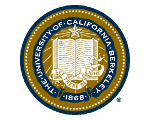Mikael Lundqvist
Department of Computational Biology Royal Institute of Technology (KTH), Stockholm, Sweden
Investigating the functional role of nested oscillations in a biophysically-detailed spiking attractor network
Wednesday 03rd of July 2013 at 12:00pm
Evans 560
Nested oscillations, where the phase of the underlying slow rhythm
modulates the power of faster oscillations, have recently attracted
considerable research attention as the increased phase-coupling of
cross-frequency oscillations has been shown to relate to memory
processes. Here we investigate the hypothesis that reactivations of
memory patterns, induced by either external stimuli or internal
dynamics, are manifested as distributed cell assemblies oscillating at
gamma-like frequencies with life-times on a theta scale. For this
purpose we continue to study a meso-scale attractor memory network
model which displays emergent oscillatory dynamics during memory
retrieval. We investigate spatial interactions in single frequency
bands as well as interactions between distinct frequency components in
the synthesized field potential spectra with emphasis on the
phenomenon referred to as nesting. A hierarchical nested organization
of neural oscillations in theta and gamma frequency bands emerges
during memory retrieval. In some conditions the network also displays
nested alpha-like oscillations. Despite highly irregular firing during
memory retrieval, and random connectivity within each cell assembly,
we also observe, as a correlate of oscillatory dynamics, precise
spatiotemporal firing patterns that were repeated across memory
activations at a rate higher than expected from random firing. In
contrast to earlier studies aimed at modeling neural oscillations, our
attractor memory network allows us to elaborate on the functional
context of emerging rhythms and discuss their relevance. We provide
support for the hypothesis that the dynamics of coherent delta/theta
oscillations constitute an important aspect of the formation and
replay of neuronal assemblies.
Join Email List
You can subscribe to our weekly seminar email list by sending an email to
majordomo@lists.berkeley.edu that contains the words
subscribe redwood in the body of the message.
(Note: The subject line can be arbitrary and will be ignored)

